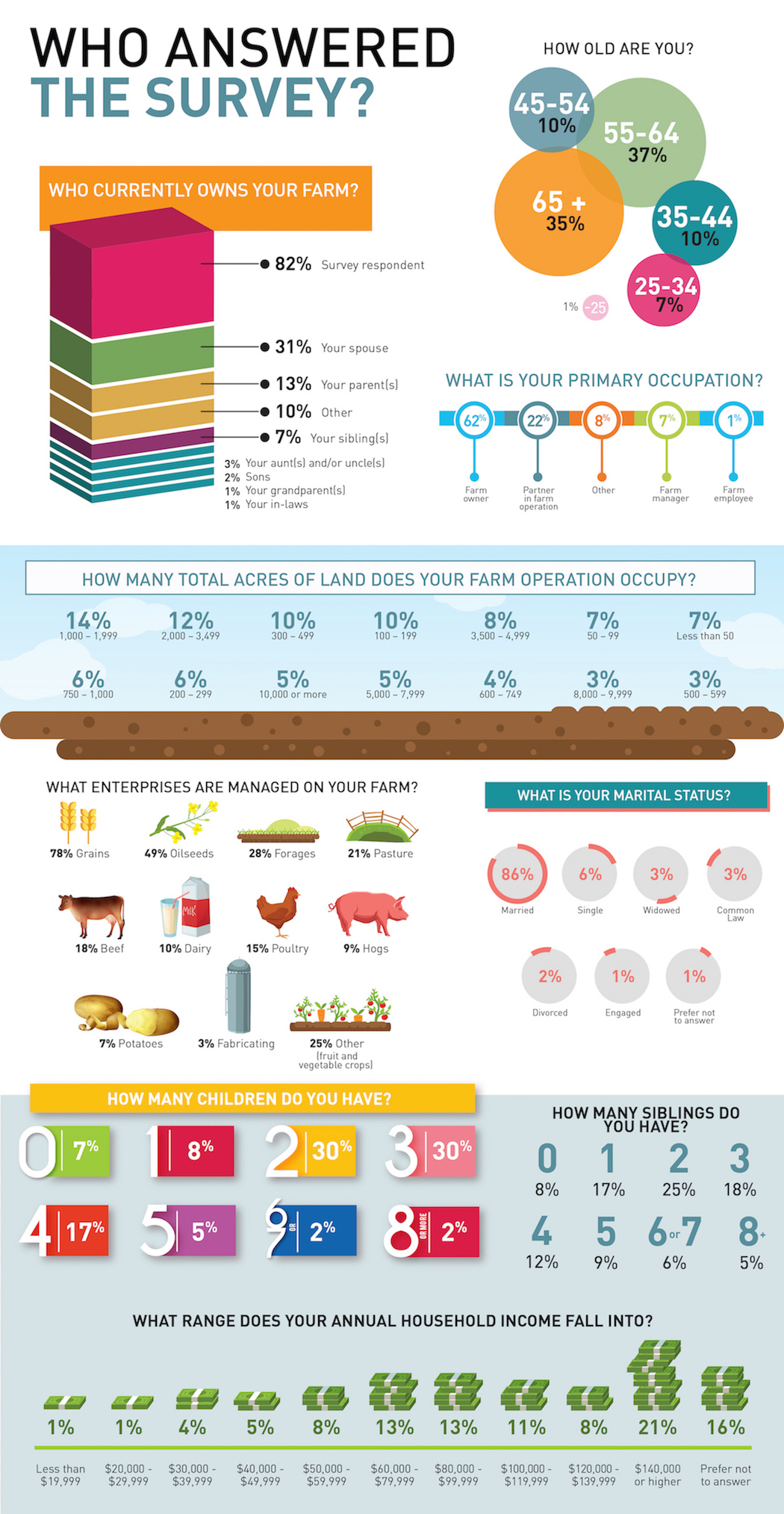A majority of survey respondents are the current owners of their operation: 82 per cent of respondents own their operation and 31 per cent of respondents are the spouse of the current owner. To a lesser extent, 13 per cent of respondents are the children of the current owners.
The typical size of operation for survey respondents was between 1,000 to 1,999 acres. The second most popular acreage was between 2,000 to 3,499 acres. While thousands of acres dominated the top two results, the third and fourth most popular option were between 300 and 499 acres and between 100 to 199 acres. Overall, there was a lot of variation in farm size.
The difference in acreage could be linked to what enterprises are managed on the farm and for 78 per cent of respondents, grains (wheat, barley, corn, oats, soybeans) were the key crop for their operation. Oilseeds, such as canola and flax, came in second with 49 per cent of respondents managing oilseeds on their operation. To a lesser extent, other respondents managed forages (28 per cent), pasture (21 per cent), beef (18 per cent), poultry (15 per cent) dairy (10 per cent), hogs (nine per cent), and potatoes (seven per cent). The fourth highest result was “Other” with 25 per cent of survey respondents managing enterprises, such as fruits and vegetables, on their operations.
A large percentage of survey respondents are married (86 per cent). The second highest result were respondents who are single (six per cent), and to a lesser extent either widowed (three per cent), common law (three per cent), or divorced (two per cent).
When it came to children, 60 per cent of survey respondents have either two or three children. A small percentage have zero children (seven per cent) or just one child (eight per cent). However, having more than three children isn’t uncommon among respondents, with 17 per cent of survey respondents having four children, and five per cent having five children.
A quarter of survey respondents have two siblings, with three or one sibling(s) being the second and third most popular result respectively. Overall, 92 per cent of all respondents have one sibling or more. Only eight per cent of respondents do not have any siblings.
In transition planning where family dynamics can become a barrier in discussions, a majority of survey respondents are going through the process with either siblings or children in the mix.

